As an ecommerce business owner, moving inventory can be time-consuming and challenging.
That’s why thousands of brands partner with ShipBob to distribute their inventory and outsource fulfilment to experts.
ShipBob operates dozens of fulfilment centres within the US and aboard to enable 2-day shipping across the country, as well as middle-mile solutions to get inventory where it needs to go quickly and cost-effectively.
Skip to learn more about how middle-mile logistics works.

“By shortening the transit distance, we get to shorten transit time and reduce the amount of pollution produced in the shipping process. Even in the final stages of fulfilment and last-mile delivery, ShipBob enables us to stay true to our mission!”
Juliana Brasil,
Director of Operations at Food Huggers
Request Fulfilment Pricing
We’ll get back to you within 24 hours. Privacy Policy
What is middle-mile logistics?
Middle-mile logistics refers to the ecommerce supply chain process of moving inventory from one warehouse, fulfilment centre, or distribution centre to the next.
By moving and distributing inventory across multiple strategically-placed facilities, brands can optimise inventory levels in certain areas based on customer demand. This reduces shipping times and costs for businesses, helping them scale more efficiently. With access to multiple warehouse locations, you can transfer inventory easily and affordably to create a more an agile supply chain.
Middle-mile vs. last-mile logistics
Middle-mile logistics refers to the process of moving inventory from one of an ecommerce brand’s facilities to another of its facilities, usually to optimise inventory balances at different locations based on demand.
Last-mile logistics, on the other hand, refers to the process of transporting a packages from an ecommerce brand’s facility to the end customer. Last-mile logistics begin the moment an ecommerce brand hands the parcel over to the shipping carrier. The shipping carrier then ships the package to its final destination.
Middle-mile vs. first-mile delivery
First-mile delivery refers to a supplier or manufacturer transporting inventory from their facilities to an ecommerce brand’s warehouse, fulfilment centre, or distribution centre.
Once the ecommerce brand receives that inventory at their facility, it can then be moved to the brand’s other fulfilment or distribution centres through middle-mile logistics.
While first- and last-mile logistics involve an outside vendor (i.e. suppliers, manufacturers, or shipping couriers), middle-mile logistics do not. The inventory never leaves the ecommerce brand’s custody, and is therefore considered an internal logistics process.
How middle-mile logistics work with ShipBob
ShipBob offers a network of fulfilment centres to help businesses strategically expand into new distribution locations based on where customers are located and/or where demand is on the rise.
This not only speeds up order delivery and reduces shipping costs, but it also helps mitigate risks in case of unexpected warehouse closures or inability of couriers to pick up from the facility due to bad weather.
Additionally, with a network of fulfilment centres, you can provide customers with affordable 2-day shipping in the US (and affordable international shipping with global locations) while handing off fulfilment to experts.
“For us, changing from a 3 week lead time to 3 days through ShipBob is what drove our sales. Even now, one of the primary reviews we get on Etsy is, ‘My order arrived really quickly!’
Having the stock locally in the US means that lead times and shipping times are minimal, and that you’ll get higher conversion rates because you’re offering better lead times.”
John Greenhalgh, Co-Founder of A Year of Dates
Once ShipBob receives your inventory, orders placed through your sales channels will be routed to the nearest fulfilment centre. Throughout the fulfilment process, you can manage inventory, view data and analytics including insights on future demand, and manage SKUs all from one single dashboard.
What are the advantages of middle-mile delivery?
Middle-mile logistics may seem like an unnecessary step in a supply chain that’s already complicated. But when done right, distributing inventory via middle-mile logistics unlocks several key benefits for your business.
Reduced transit times
The farther a package must travel via a shipping carrier during last-mile delivery, the longer it will take to ship. By distributing inventory across multiple warehouses in different regions via middle-mile logistics, brands can place inventory closer to more customers, minimise shipping distance, and reduce shipping times.
Cost savings
Even if it costs money to move inventory from a centralised warehouse to a regional fulfilment centre, you’ll still achieve cost savings by lowering shipping costs and minimising expensive stockouts.
Inventory balancing
Middle-mile logistics give ecommerce brands a way to make sure inventory ends up where it’s most needed. For example, if there’s a sudden spike in demand and a fulfilment centre is about to run out of a SKU, a brand can take stock from a different facility use middle-mile logistics to send it to the first fulfilment centre so they can avoid delays and backorders.
Greater, real-time supply chain visibility
Good middle-mile logistics requires software that provides real-time insight into inventory, orders, and fulfilment analytics across all your channels. This system will not only streamline your inventory distribution, but will also help you make more data-driven decisions and optimise your whole supply chain for efficiency.
How ShipBob improves your fulfilment and logistics
Save on fulfilment costs
Coffee creamer brand Prymal joined ShipBob in 2019 and was quickly able to save $8,000 per month on fulfilment costs, while at the same time achieving 4x growth.
Improve your conversion rate
After switching to ShipBob, RIFRUF was able to offer 2-day shipping, which helped increased their conversions.
Store, ship, and grow internationally
Sunglasses brand Ombraz distributed their inventory across 3 fulfilment centres in two different countries. This has allowed them to ship to 55 countries on seven continents.
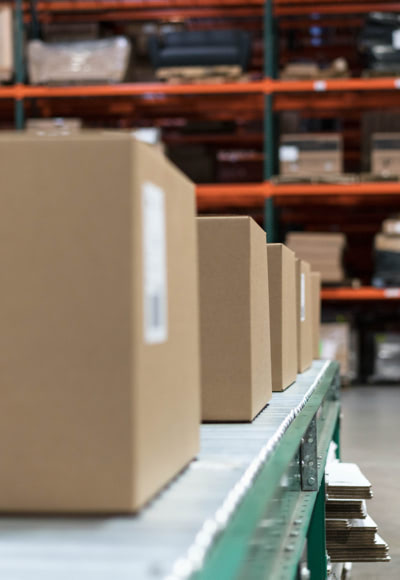

Distributed inventory
With ShipBob’s network of fulfilment centres, you can strategically split your inventory across our locations to get your products from point A to point B more quickly and affordably. Storing inventory near your customers helps reduce the shipping zones and costs associated with shipping orders to faraway destinations.
Distributed inventory also helps you stay competitive by offering fast shipping to your customers. When an order is placed, ShipBob’s algorithm automatically selects the warehouse and carrier that will give you the quickest turnaround at the best price. This strategy has helped our merchants bring 13% savings to their bottom line.
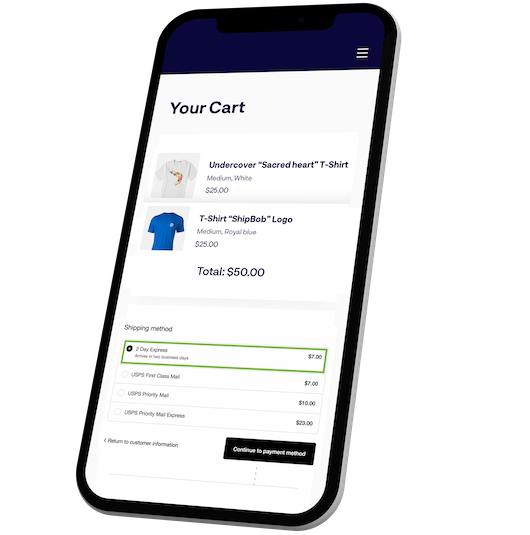
100% Coverage Across the Continental US
If you’re looking to expand into the United States, ShipBob has 2-Day Express Shipping that provides 100% coverage in the continental US from even just one fulfilment centre.
You can also distribute your inventory across ShipBob’s fulfilment centres across all regions of the United States. We leave it up to you to decide where you want us to store your inventory.
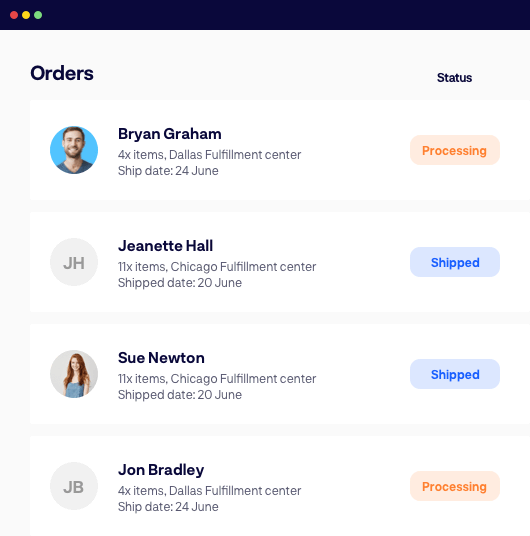
Order management
At ShipBob, we track your orders from A to Z. Filter orders by status, search for specific orders, see a quick timeline view of where your order is in the fulfilment process (e.g. when an order is picked, packed, or shipped), easily find shipping-related information (e.g., weights, dimensions, or carrier service), and get a quick snapshot of any orders that require action.
With order management software for your direct-to-consumer and wholesale shipments, you can manage subscriptions, make changes to your orders post-purchase, map your store’s shipping options to ShipBob, and automatically share tracking information with your customers.

Inventory management
At ShipBob, we empower merchants to manage their inventory with the right tools and guidance. It’s easy to view the status of inventory and quantity on hand across locations at any point in time, identify slow-moving inventory with high storage costs, and gain insights into the performance of units sold over time by channel.
Our inventory management software helps you set reminders to proactively replenish inventory with reorder notifications, bundle your products for promotions, make inventory transfer requests, and much more.
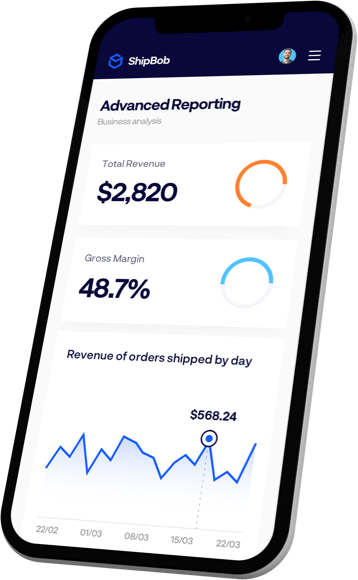
Reporting and analytics
To provide you with visibility into our operations and performance, and also hold ourselves accountable, ShipBob’s free analytics tool is packed with charts to help you with everything from year-end reporting, to better supply chain decision-making.
Data can be a competitive advantage, and our reports show an analysis of which fulfilment centres you should stock, days of inventory left before you run out, impact of promotions on stock levels, each shipping method’s average cart value, shipping cost, and days in transit, your fulfilment cost per order, storage cost per unit, and much more.
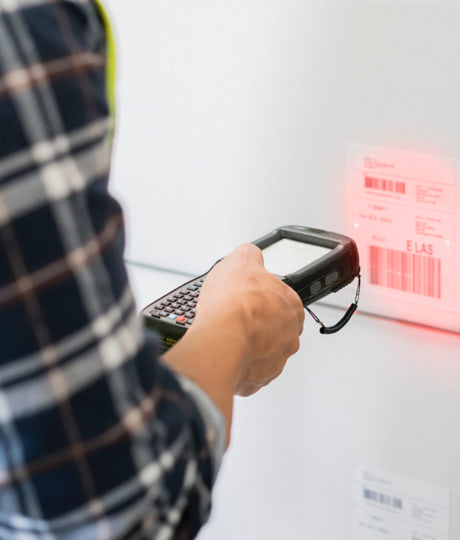
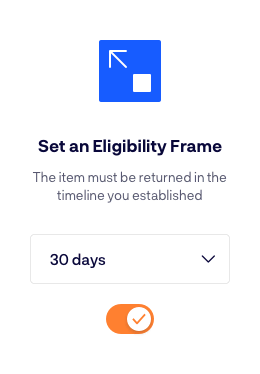
End-to-end customer experience
We care about the customer experience as much as you and strive to be an extension of your team. From custom branded boxes to free plain packaging, ShipBob works with you to provide the unboxing experience you want. We also help you offer the fastest, most cost-effective shipping options to meet your customers’ expectations.
As soon as an order ships, tracking is pushed back to your store. We also offer return management services, allowing customers to generate return shipping labels and track returns, while getting your products processed and back into your available inventory as efficiently as possible.
Middle-mile logistics FAQs
Below are answers to some of the most common questions about middle-mile logistics.
What are the causes of middle-mile transportation problems?
Middle-mile transportation issues often result from lack of internal communication, limited visibility into inventory, poor routing strategy, or poor middle-mile management from a logistics partner, among other causes.
How does middle-mile logistics affect the supply chain?
Good middle-mile logistics can hugely benefit a brand’s supply chain by reducing shipping times and costs, saving money, improving internal visibility, and balancing inventory across multiple fulfilment or distribution centres.
How do you integrate last-mile delivery with other distribution channels and platforms?
Last-mile delivery looks different depending on which distribution channels and platforms an ecommerce brand uses.
When fulfilling orders through DTC channels (such as your ecommerce store and retail dropshipping), brands will still need to partner shipping couriers to transport packages to end customers. B2B and retail distribution channels, on the other hand, do not require ecommerce brands to figure out last-mile delivery (as the seller is responsible for shipping goods to customers).
Ecommerce businesses looking for an expert to help them coordinate with shipping couriers can partner with an expert logistics and fulfilment platform like ShipBob, which will handle fulfilment and shipping on their behalf.